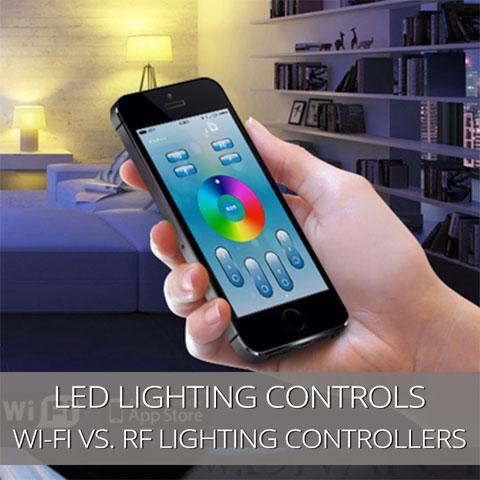Which Is Better For Controlling LED Lighting: Radio Frequency or Wi-Fi?
When it comes to creating the right mood in your home, fewer solutions are as simple, versatile and cost effective as LED lighting.
Many people use colour changing LED lights to alter the ambience in their homes. There are two ways to control LED lighting by remote; wi-fi and radio frequency or RF for short. Both have their advantages and disadvantages so let's examine the pros and cons.
Wi-Fi Control
The key benefit of Wi-fi controlled led lights is that they can be controlled from a much longer range than standard rf controlled lights. The effective range of the control is 50 metres as opposed to 25 metres, effectively giving you the ability to control the lights from most rooms in a normal sized house.
As well as having a longer range, these controllers can be manipulated via an iPhone, Android phone or compatible tablet using the Marlight app, as well as the supplied physical remote control. This means that perfect lighting is always at your fingertips without having to hunt for the remote.
The main downside is the increased cost of this type of controller vs. the rf controllers, but the greater convenience makes up for the increased cost.
Radio frequency control
Although rf control only offers a much shorter range, the price is appropriately lower. Multiple units can be daisy chained to act as signal repeaters or amplifiers so that you can cover all the areas of your house with controller access.
A stop gap alternative is a wifi to rf convertor. This brings you the convenience of using a smartphone to control your rf controllers, as well as the cheaper price associated with standard rf controllers.
All of the units can handle up to 8 distinct lighting zones, as well as both RGBWW (Red, Green, Blue, Warm White) led strip lights and RGB LED downlights and plinth lights. This versatility gives you the flexibility you require when lighting different areas of your home, enabling you to create distinct moods to suit every occasion in all rooms of your house.

